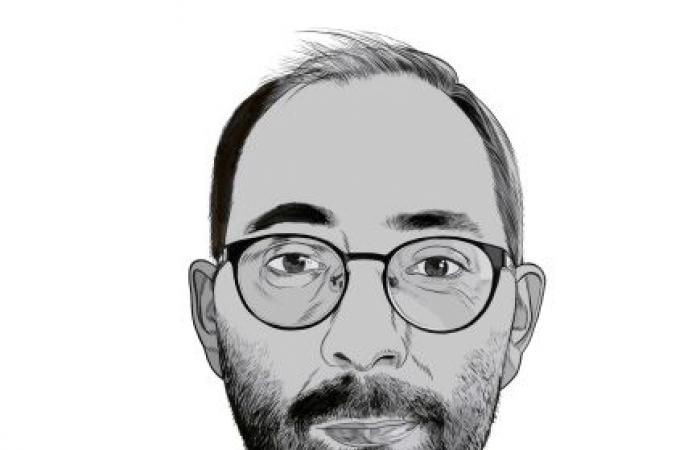The National Rally (RN) health program mainly contains seven measures that can be grouped into three main themes: the fight against the burden of administrative work in the health system; access to doctors and medicines in a context of shortage; the fight against fraud and the level of health expenditure for illegal immigrants.
Overall, the proposed measures do not allow us to achieve the announced objectives in terms of access to care and simplification.
This is all the less surprising since the RN’s policy is manifested by the pursuit of austerity. Not a single new resource has been announced and many proposals suggest a reduction in spending. As if that were not enough, the RN’s program is characterized by social contempt and xenophobia.
The newsletter of Alternatives Économiques
Every Sunday at 5 p.m., our analysis of the week’s news
Reducing the burden of administrative services in hospitals
The RN wants to combat the burden of administrative work in hospitals by imposing a ceiling of 10% of administrative positions. The problem is that this threshold is already respected in public hospitals. According to statistics from the Directorate of Research, Studies, Evaluation and Statistics (Drees) for the year 2020, the share of administrative employment in public hospitals was 10.04%.
To reach the 10% threshold, it was necessary to cut 455 jobs out of 107,524 administrative positions and 1,070,691 positions in total. It is difficult to imagine how the elimination of 0.042% of jobs in public hospitals could improve the working conditions of staff or the reception of patients.
Who does the RN want to get rid of: educational and social staff, medical-technical staff, technical and manual staff? And who would do the lost work? Will it be a question of outsourcing to the private sector? Who thinks that these institutions can withstand such a shock?
Saying that we want to debureaucratize the hospital is something that can make sense given all the work on the harmful effects of the new public management. But before thinking about getting rid of part of the staff, we must say what useless work will be eliminated, and how this freed up time could not be used to carry out other useful tasks.
Why would we want to impose an absurd rule rather than discussing and reforming what work in a hospital is?
Besides, is unnecessary bureaucratic work only done by administrators, or aren’t healthcare staff also asked to “check boxes” to the detriment of their core business? In this case, why would we want to impose an aberrant rule rather than discussing and reforming what work in the hospital is?
Without answers to these questions, reducing the share of administrative employment means imposing an austerity policy which will lead to healthcare workers taking on an additional share of administrative work and to patients seeing their administrative wandering increase.
Either the 10% threshold means nothing because it is already respected, or it is a blind redundancy plan that does not say its name.
Elimination of regional health agencies
The RN program proposes to eliminate the regional health agencies (ARS). But it is not really clear what they would be replaced by. The ARS have been criticized in recent years because they locally apply national decisions considered undemocratic, unsuitable and too brutal.
While their creation could have suggested real discretionary power at the regional level, the ARS’ room for maneuver in relation to the ministry is very limited. Here and there, demonstrations are taking place against these institutions, which are seen as health prefectures.
The ARS would be replaced by the regional prefects through the regional directorates of health and social affairs (Drass). The Drass were an important administrative level of health policy which were merged (with six other organizations) into the ARS.
We would go backwards, still without democracy and without knowing what would become of the other missions of the ARS previously not carried out by the DRASS? Is that really reasonable?
Fight against medical deserts
To combat medical deserts, the RN is planning two measures: the easing of employment-retirement accumulation schemes for doctors and nurses; the elimination of tax on the earned income of retired doctors and nurses returning to work.
The problem is that these measures are generally ineffective in combating medical deserts.
The problem is that these measures are generally ineffective in combating medical deserts. Combining employment and retirement allows independent doctors to earn income from work while still receiving their pension. The rules have been significantly relaxed in recent years, in particular by removing the ceiling on the income that can be earned with the combination of employment and retirement.
Due to the aging of the physician population and these reforms, the number of physicians holding multiple positions has increased significantly. There were 4,469 in 2011 (3.5% of the total population) compared to 12,116 in 2018 (9.7% of the total population).
According to the Drees, this development has not benefited medical deserts. Specialists stay longer where they are already more numerous, particularly in Paris. In the case of general practitioners, those who practice in under-populated areas stay longer, but not for financial reasons: because they know that in the event of a departure, they leave their patients without solutions.
Concerning the elimination of income tax for doctors returning to work, there is no evidence that this would encourage them to relocate to underpopulated areas, especially since no targeting of the measure is envisaged. The most likely outcome is a windfall effect: doctors who had already planned to remain in work would also gain a tax reduction.
Moreover, existing studies show that French doctors reduce their activity when their income increases. The windfall effect could then be all the more significant since the new medical convention has just significantly increased fees.
Not only do the means to combat medical deserts seem ineffective and expensive, but in addition nothing in the RN program is said about regulating the freedom of doctors to set up or about public investment in primary care.
Increase the number of doctors
The RN program also plans to increase the number of medical students. The question of medical demography is indeed central to access to care. However, the program says nothing about the means to be given to universities to accommodate the additional students in good conditions.
Nor does it say anything about how the number of students is to be defined. The numerus clausus rule has been replaced by the “numerus apertus” rule. Changing the name of the rule again will not make it more effective.
Above all, training doctors takes more than ten years and one would expect to find measures to address the problems in the short and medium term. Nothing is said about a possible extension of tasks for non-medical professions (such as advanced practice nurses or medical assistants), allowing for freeing up medical time.
Nor is there any mention of the investment needed in primary care coordination.
Drug policy
For the drug policy, the RN plans unit sales to combat shortages and waste.
However, the shortage of medicines is not linked to material constraints on the production of medicines which could only be resolved by a better sharing of a limited number of units produced.
The drug crisis is not a packaging crisis, however.
The shortage is caused by the business model of the pharmaceutical industry, which prefers not to produce drugs that it considers unprofitable. Combating the shortage involves either giving in to the industry’s demands by increasing prices or opposing them by building “pharmaceutical commons,” for example.
The RN is silent on the issue of drug prices and production. However, the drug crisis is not a packaging crisis.
The fight against fraud
A key point of the RN program concerns the fight against fraud, which would reduce the pressure on social budgets. The figures are rather imprecise. The RN intends to save “10 to 20, even 25 billion euros for social security fraud ».
With regard to health, in its May 2023 report, the Court of Auditors estimates fraud at between 1.1 and 1.3 billion for 27% of health insurance expenditure, or 3.8 to 4.5 billion of all expenditure.
Two remarks should help to put this discourse on the fight against fraud as a source of savings for the health system at a distance. On the one hand, the amounts of fraud remain low compared to total health expenditure: between 1.21 and 1.43%. Fraud is everywhere in the public debate, but quite marginal compared to the challenges of the health system.
On the contrary, we could draw attention to the massive non-use of rights. In particular, 31% of people eligible for solidarity health coverage in 2020 did not use it. While this system provides access to completely free health coverage below an income threshold, non-use is very significant… and saves public finances (around 1 billion euros per year).
Healthcare fraud is mostly committed by professionals, but RN program targets patients
On the other hand, fraud on health issues is mainly fraud by professionals. In its annual report on fraud, the National Health Insurance Fund states that it has detected and stopped 466 million euros of fraud, of which only 19.5% concerned patients. However, in its anti-fraud measures, the RN program targets patients.
The proposal to generalize the biometric health card is emblematic in this regard. The Court of Auditors reports: “that a biometric card would have a disproportionate cost compared to the risks of fraud”. It would be necessary to equip 400,000 health professionals with specific card readers and replace 58 million valid cards. Not to mention the data security issues, this proposal is like crushing a fly with a hammer.
Replacement of AME with emergency medical aid
Finally, the proposal to replace state medical aid (AME) with emergency medical aid is based on the mythology of the fraudulent patient. Here, social contempt is combined with racism and xenophobia since the problems of the health system are attributed to a foreign population that would weigh inconsiderately on public spending.
Much has been written about this proposal, especially since it was taken up by Emmanuel Macron’s government during the debates on the immigration law (by Didier Fassin and our journalist Céline Mouzon, for example).
If the humanist argument is not enough to convince of the moral imperative to care for others, whoever they may be, we can always recall that AME costs only about a billion euros per year when health expenditure amounts to more than 313 billion euros per year. Who will we make believe that it is the beneficiary of AME who is increasing public deficits?
So the RN has nothing to say about the rest of the 99.7% of health spending? It has nothing to say about possible new revenues? Why did the RN forget its proposal number 14 from the presidential election on a 20 billion euro emergency health plan? Is this a new renunciation to satisfy the dogma of budgetary orthodoxy?
In conclusion, the RN’s program for the health system has all the makings of a counter-fire. Instead of discussing the most important issues, the RN is agitating the question of abuse and foreigners as if it were a matter of first order. Worse, under the veneer of a criticism of the current health policy, the RN is fully in line with the austerity and xenophobic line.






